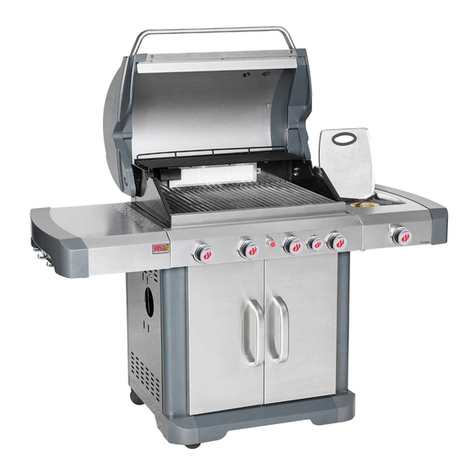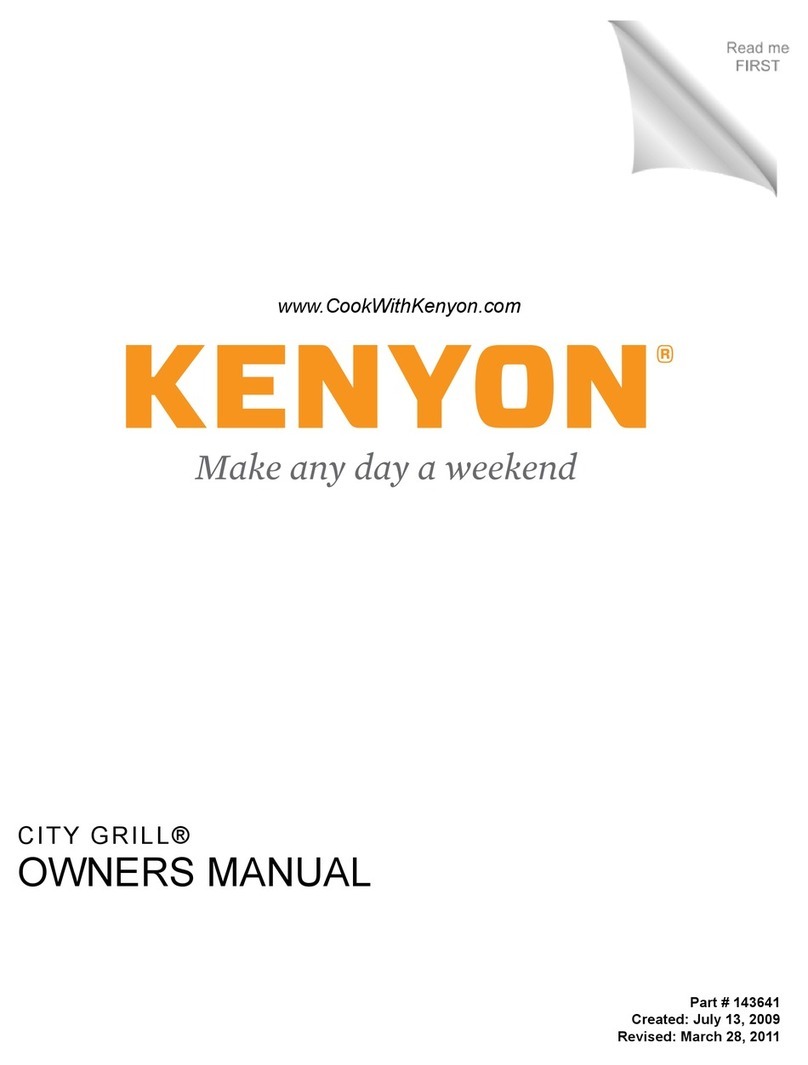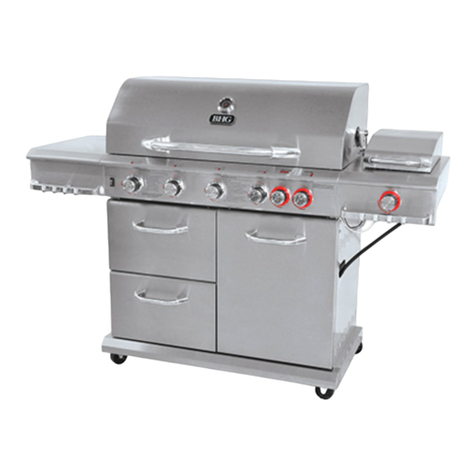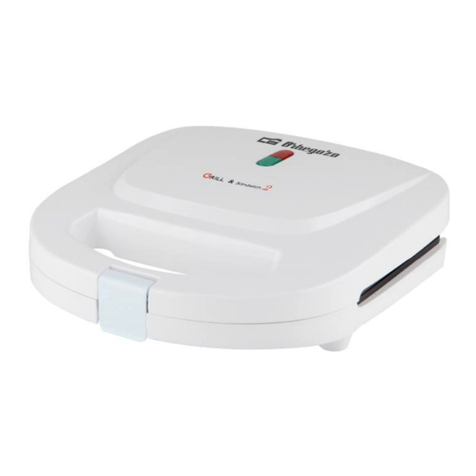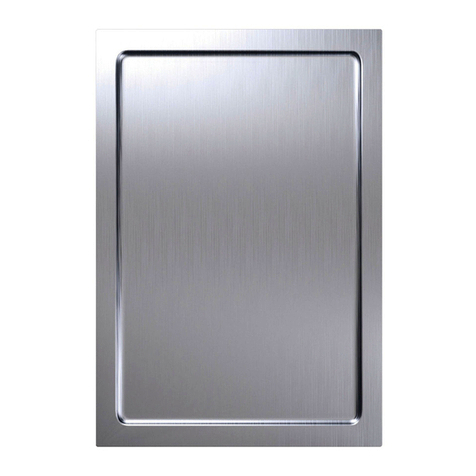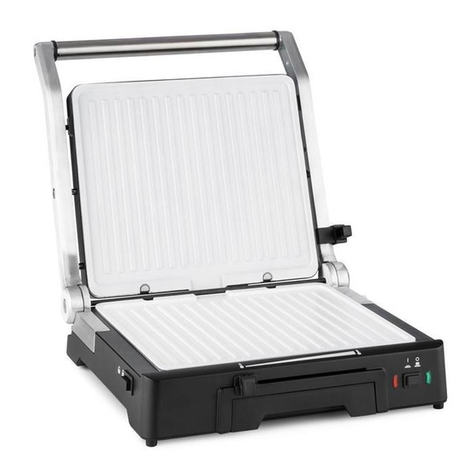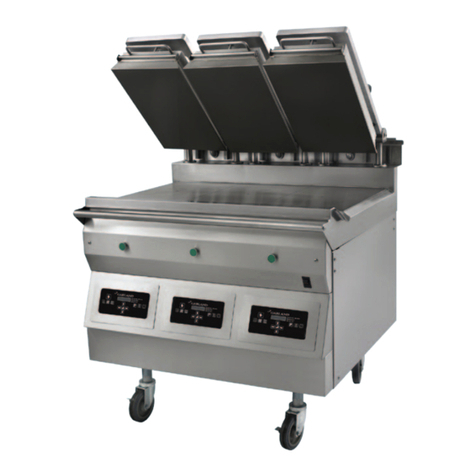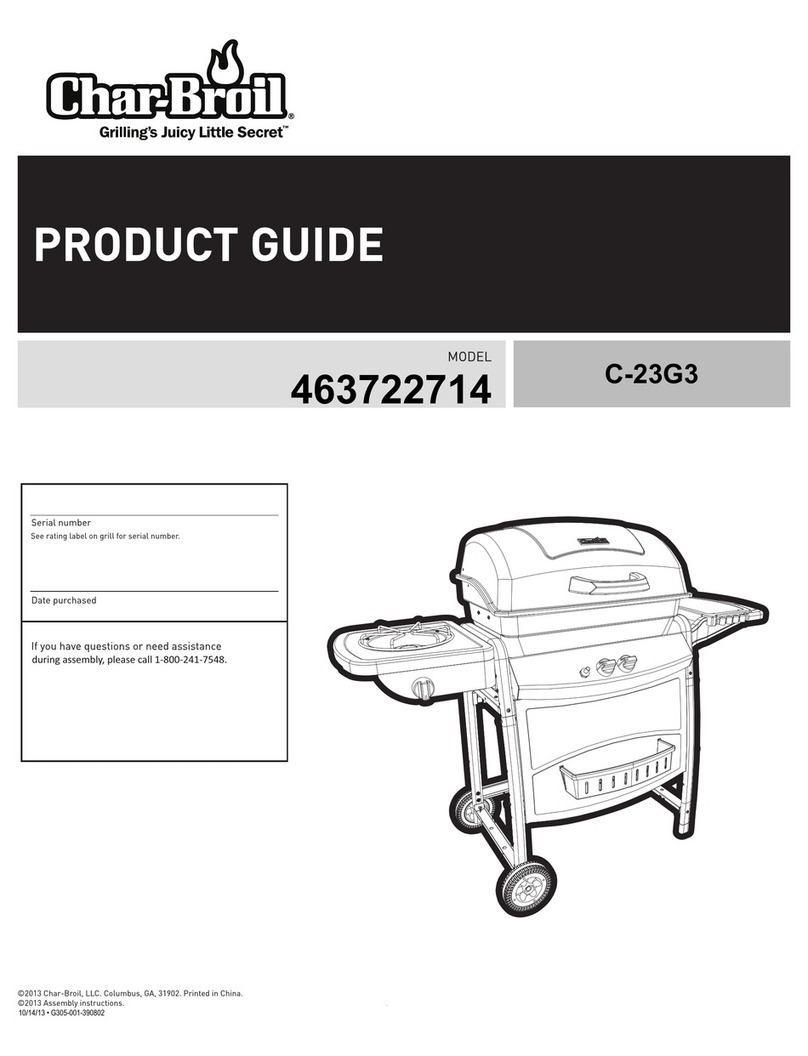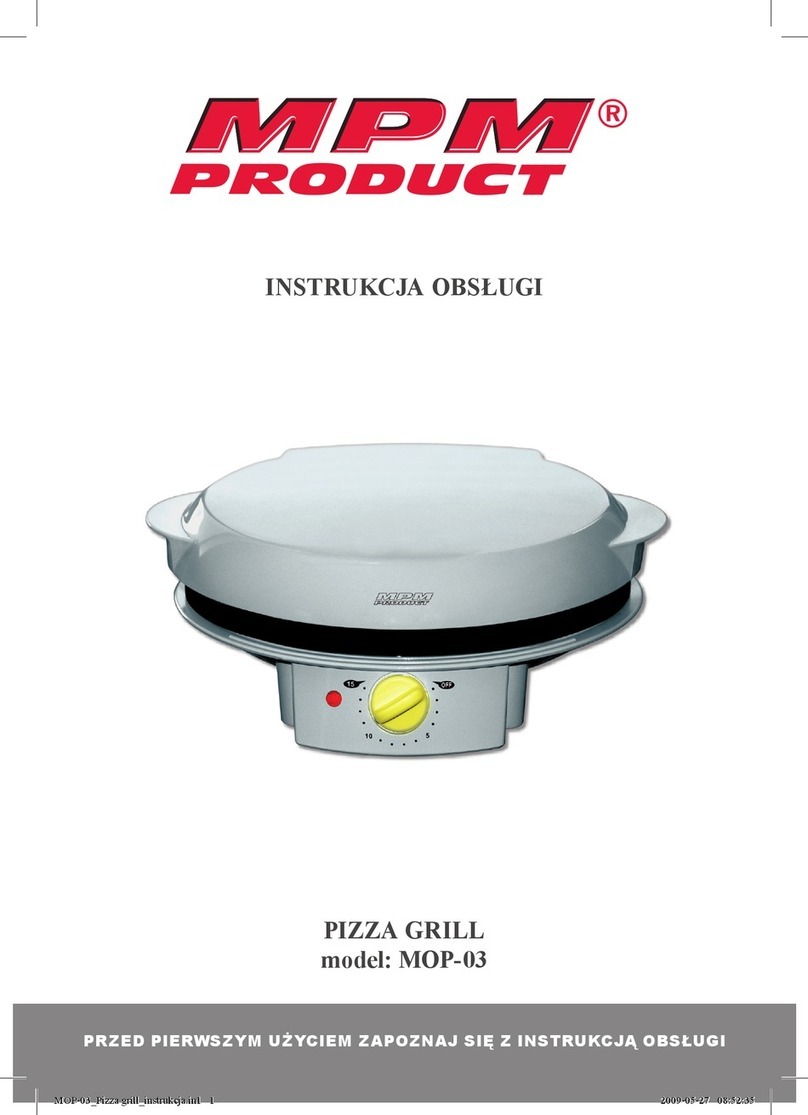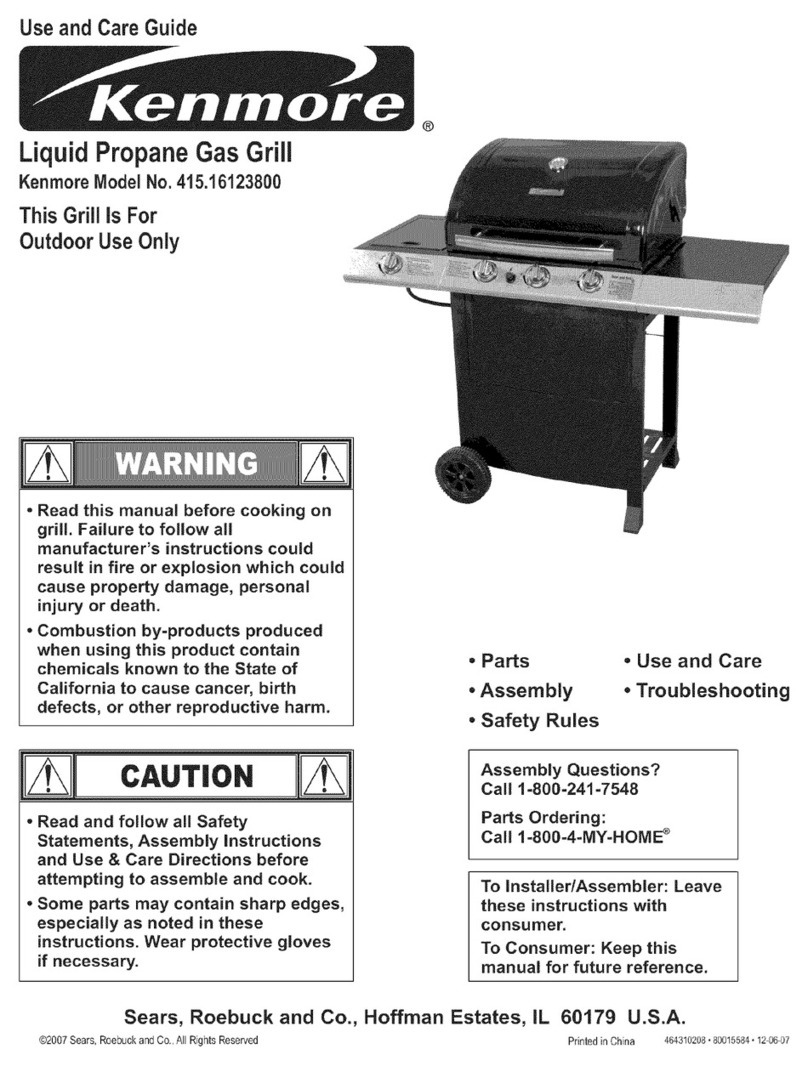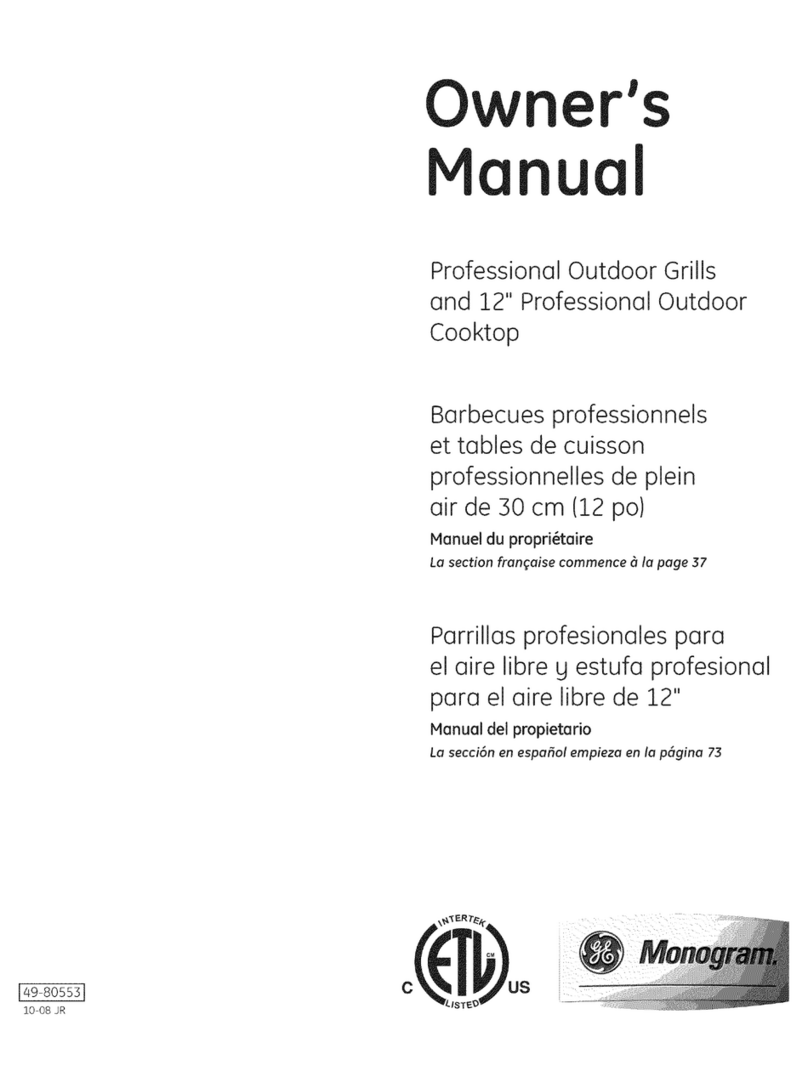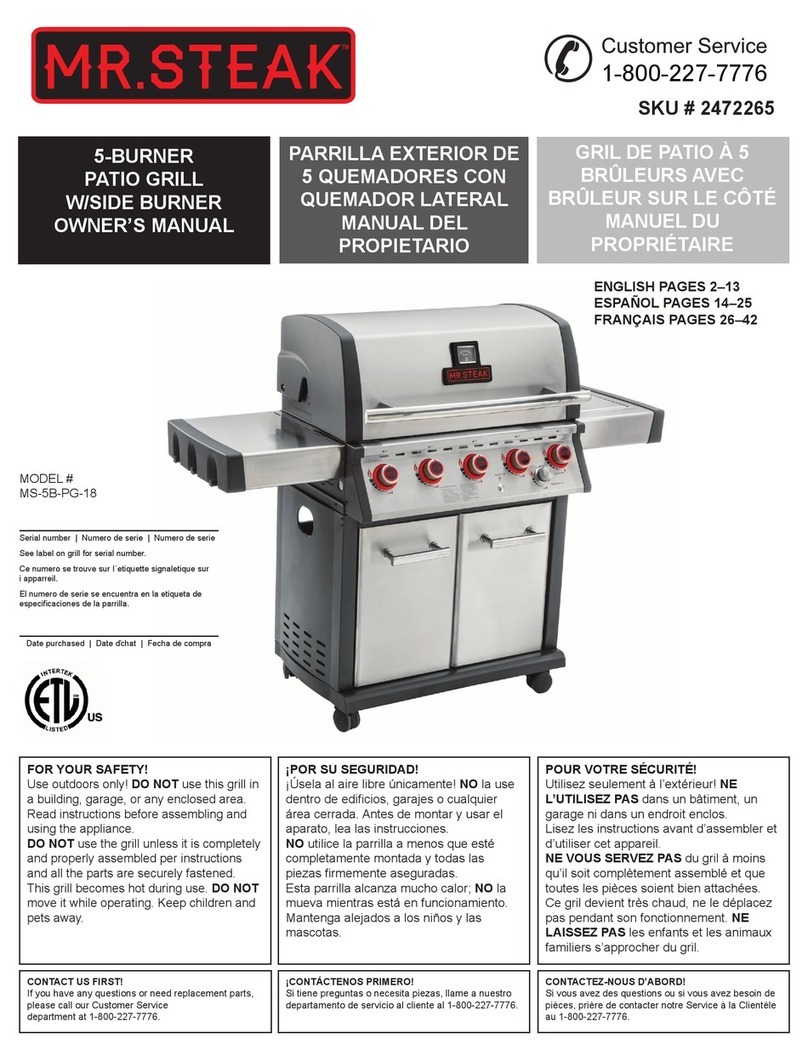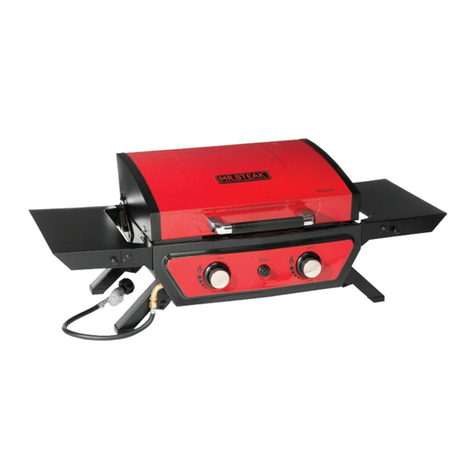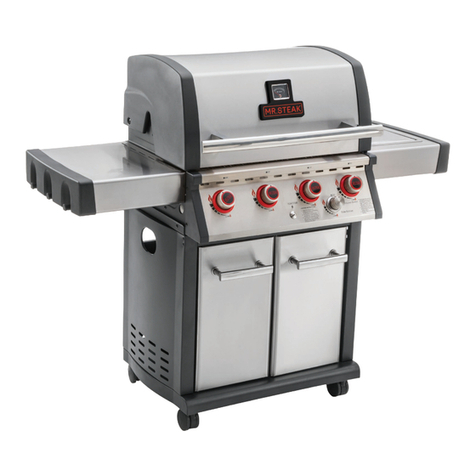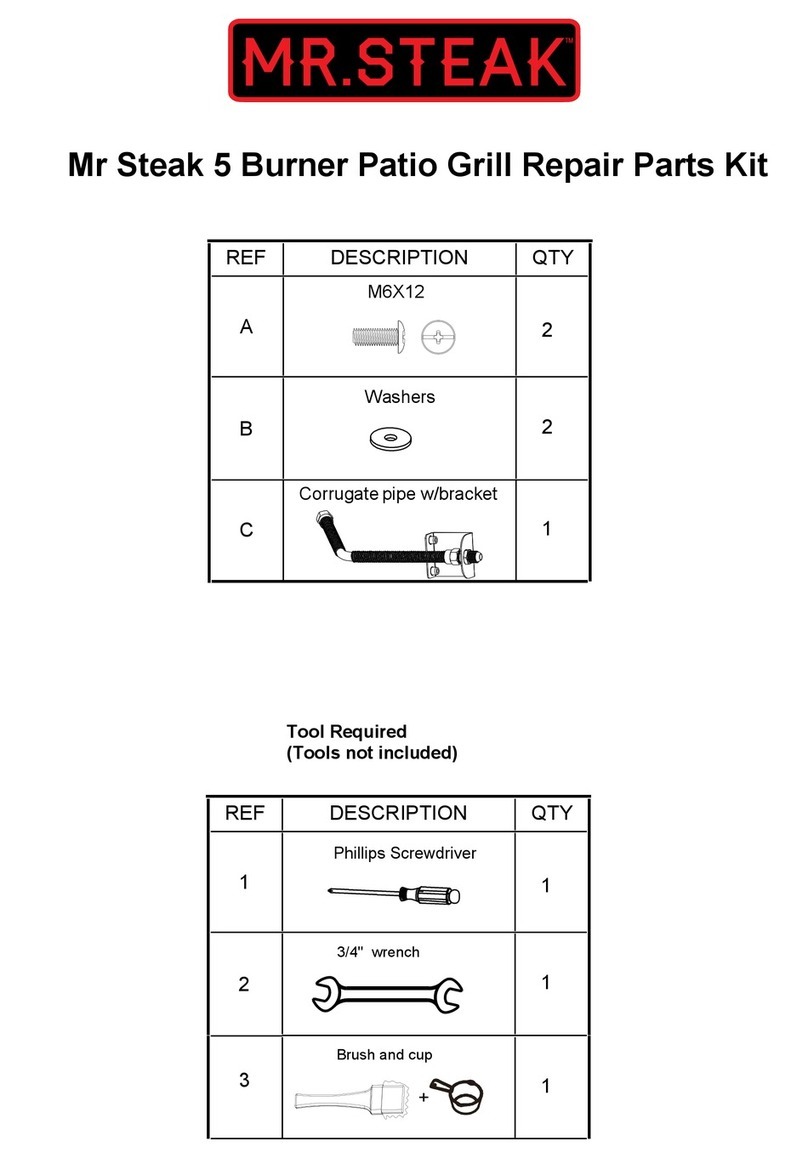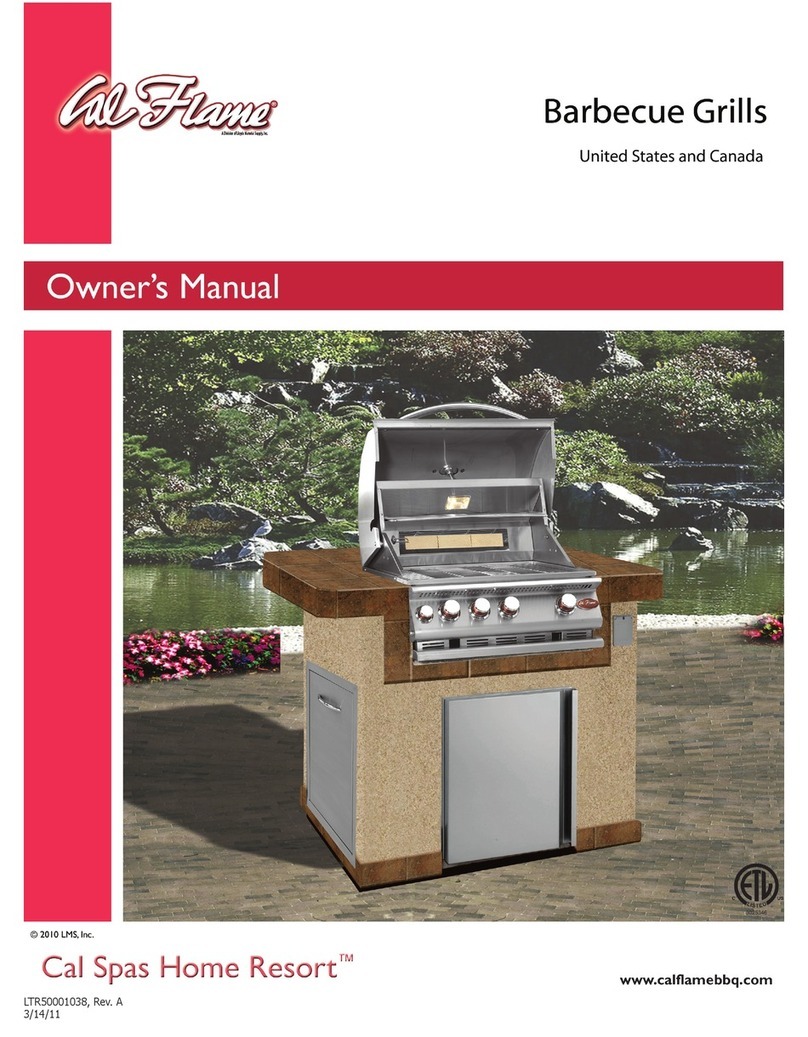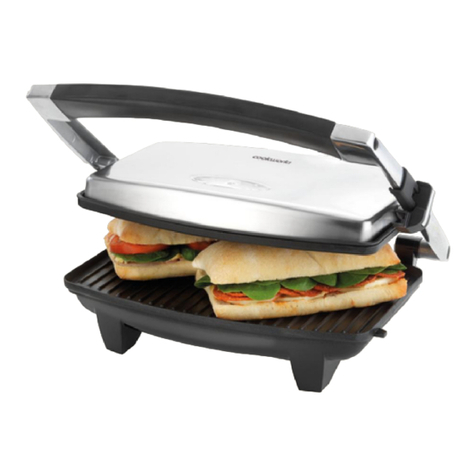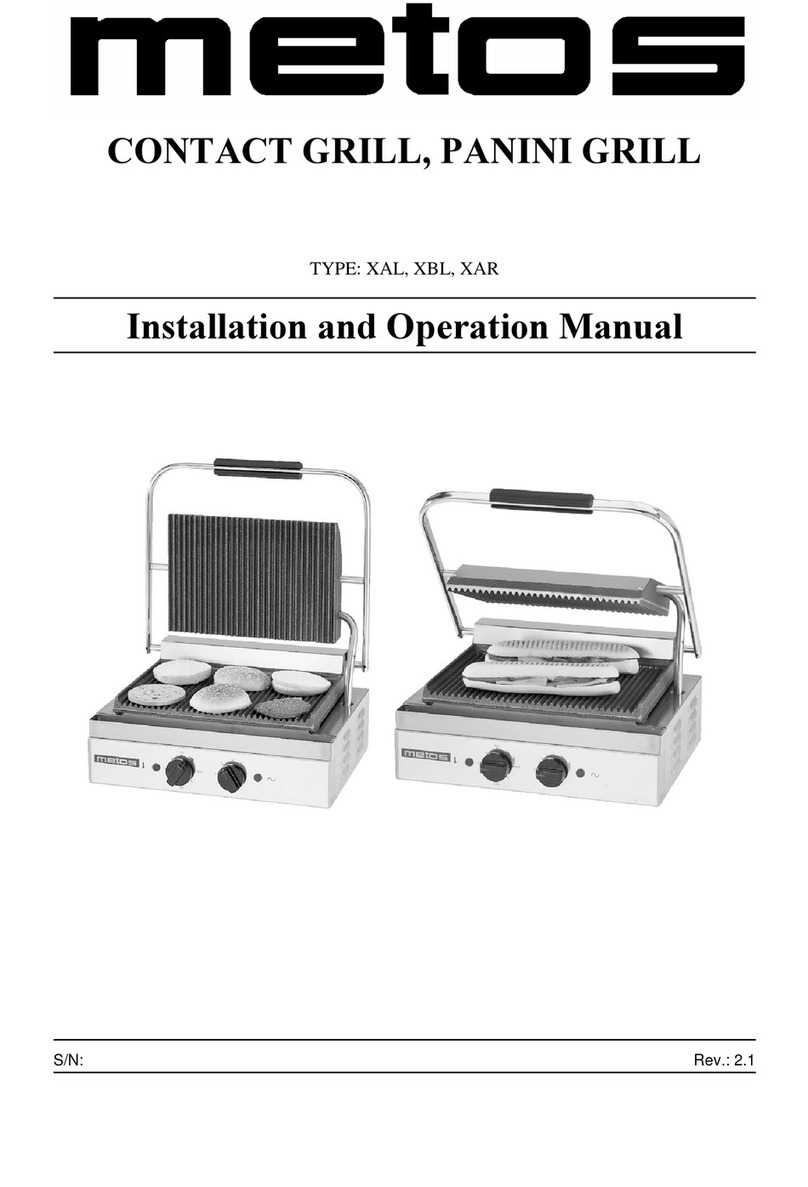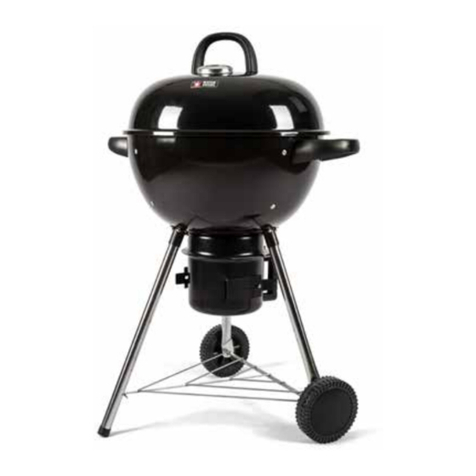
2
WARNING
CAUTION
CAUTION
DANGER
WARNING: Indicates a potentially hazardous situation
which, if not avoided, could result in serious injury or death.
DO NOT attempt to repair or alter the hose/valve/regulator for
any “assumed” defect. Any modication to this assembly will void
your warranty and create the risk of an LP leak and re. Use only
authorized replacement parts supplied by the manufacturer.
Failure to follow all manufacturer’s instructions could result in
property damage and/or serious personal injury.
• This grill should not be used in a building, garage, or any
other enclosed area.
• The use of alcohol or drugs (prescription or non-prescription)
may impair the operator’s ability to properly assemble or
safely operate the grill.
• Always open the grill lid slowly and carefully, as heat and
steam trapped within the grill can cause severe burns.
• Always place your grill on a hard, level surface far away
from combustibles. An asphalt or blacktop surface is not
recommended for this purpose.
• DO NOT leave a lit grill unattended. Keep children and pets
away from the grill at all times.
• DO NOT place this grill on any type of tabletop surface.
• DO NOT use the grill in high winds.
• DO NOT store or use gasoline or any other volatile liquids or
substances within 8 m (25ʹ) of the grill.
• When cooking with oil/grease, do not allow the oil/grease to
exceed 350ºF (177ºC). DO NOT store extra cooking oil in the
vicinity of the grill.
• Any LP cylinder not in use should be stored a minimum of
3 m (10ʹʺ) away from this or any appliance. NEVER ll the
cylinder beyond 80% full. If the above information is not
followed exactly, a re causing serious injury or death may
occur.
CAUTION: Indicates a potentially hazardous situation or
unsafe practice which, if not avoided, may result in minor
or moderate injury.
Read and follow all safety statements, assembly instructions, and
use and care directions before attempting to assemble and use
this grill.
For residential use only. Do not use for commercial cooking.
DANGER: Indicates an imminently hazardous situation
which, if not avoided, will result in serious injury or death.
• Liquid propane (LP) gas is hazardous if handled improperly.
LP is ammable, explosive under pressure, heavier than air,
and pools in low areas. Know its characteristics before using
any LP-fueled product.
• Contact with LP can cause freeze burns to skin.
• This grill is designed for use with LP ONLY.
• NEVER use an LP cylinder with a damaged body, valve,
collar, or footing. (p. 5)
• Dented or rusted LP cylinders may be hazardous and should
be checked by your LP gas supplier.
SAFETY SYMBOLS
The symbols and boxes shown below explain what each
heading means. Read and follow all of the messages found
throughout the manual.
WARNING
WARNING
WARNING
CAUTION
DANGER
FOR YOUR SAFETY
1-800-227-7776
